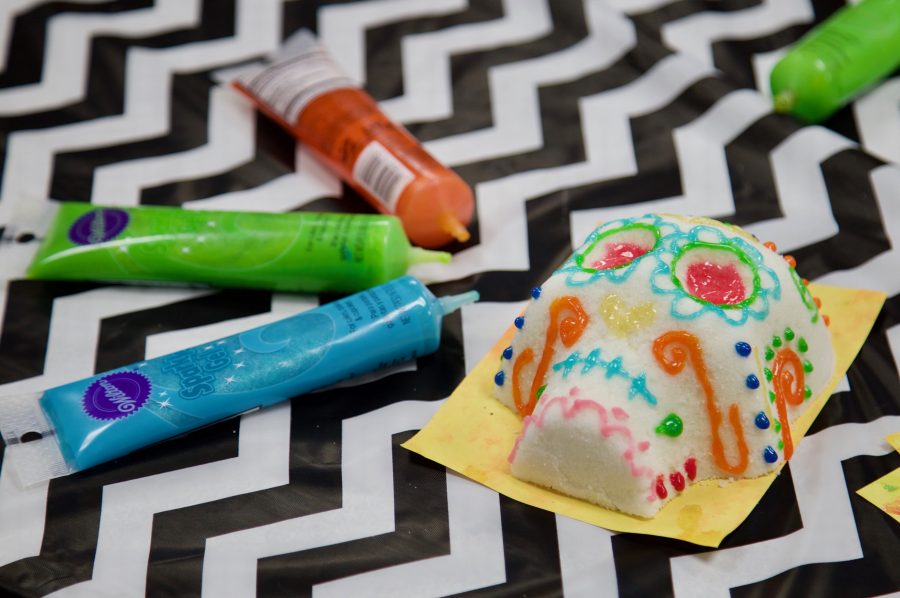Students teach and celebrate during Día de Los Muertos
November 9, 2016
With every passing year, Halloween stores and Instagram feeds brim over with the image of beautifully-patterned skulls and flower crowns. But the importance of these images and what they represent are rarely ever found alongside them.
On Nov. 1, M.E.C.h.A (Movimiento Estudiantil Chicano de Aztlán)
held a Día de los Muertos (Day of the Dead) altar event during U-hour to observe this religious and cultural holiday, while educating students in Kellogg Library Plaza.
The following day, the Latin@ Center collaborated with ASI to host an educational session on the holiday’s traditions, alongside sugar skull decorating.
Día de los Muertos is a two-day event, starting on the first of November and ending on the second. It is celebrated in several Hispanic and Latin American cultures and is in no way related to Halloween, which is the common misconception.
The holiday is a mix of Catholic influence and pre-colonial traditions and honors those who have passed away by visiting cemeteries and making altars. These altars are decorated and ofrendas (offerings) such as food, are placed for the dead. The elements of an altar are earth, fire, water and air.
On Nov.1 children and the youth are remembered and on Nov. 2 adults are remembered.
Alonzo Martinez a junior majoring in Sociology and Criminal Justice, explained that the response to and impression of death differs greatly in Latin American/Hispanic culture and, what he described as, “western culture.”
“We don’t demonize death,” he said. “The dead are our family.”
Altars were set up in Kellogg Plaza and at the Latin@ Center, teeming with vibrant marigolds and decorated with the photos of loved ones who had passed away. The Pride Center also displayed an altar, dedicated to the 49 victims of last summer’s Orlando Pulse shooting.
Small plates of food and incense were placed before each picture for the spirits of the departed. And the occasion was not a solemn one.
During the event, a group called, Danza Azteca de CSUSM, danced and played the traditional music of the native people of Mexico, clad in glittering clothes and thin-feathered headdresses.
Shortly after, alumni Vanessa Martinez, presented a spoken-word poem, a passionate response to the rising cultural appropriation of the holiday.
Ignorance of Día de los Muertos is widespread but in sharing her piece, Martinez not only informed those who stopped to listen at the event, but gave a voice and face to the tradition itself.
She stood, her face half-painted in the style of a calavera (skull) and spoke against the appropriation of the holiday. She described its history, its origins and its importance to her.
“It’s about keeping … traditions and lesson[s] alive,” said Martinez, after sharing her piece.
Martinez honors her grandmother during this holiday and says she is given this time to pray and remember her. But in seeing Día de los Muertos reduced to fashion trends or “cool” costumes, she says it is like people are trying to buy her grandmother.
Though the calaveras, altars and flower crowns are familiar to the average passerby, this IS not a trend for their exploitation. It is a tradition. Not costumes, but culture.
During the Latin@ Center’s Dia de los Muertos celebration, guest lecturer Edgar Bautista, resonated in his presentation to deconstruct stereotypes and displayed traditional elements, bringing remembrance to the departed.
With patience, honesty and passion, CSUSM’s Latin@ community will continue to educate and empower this diverse campus community with continued programming and cultural celebrations.


